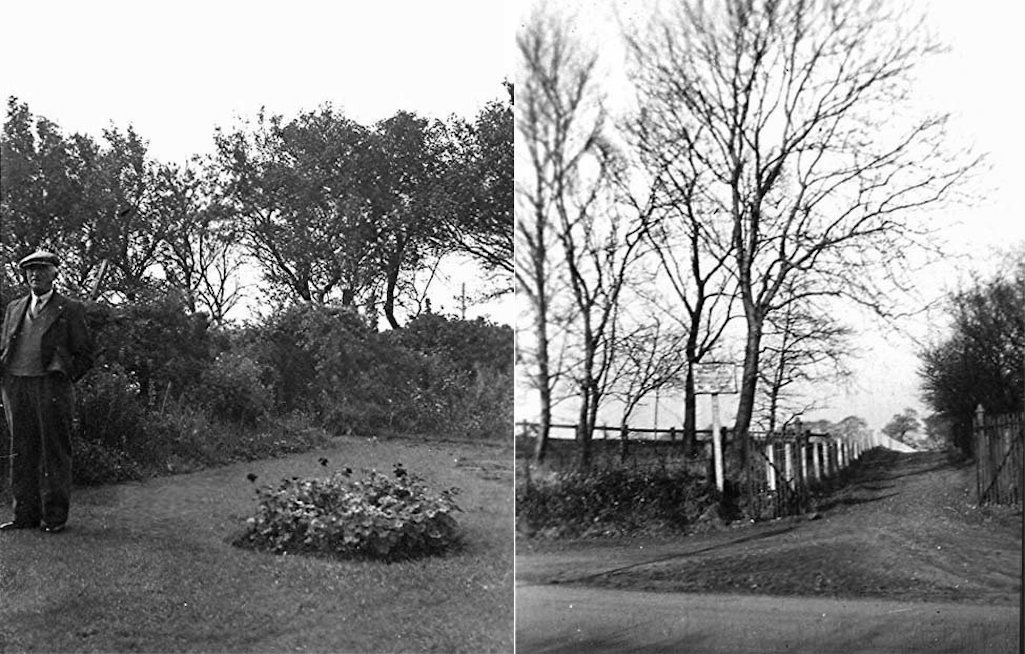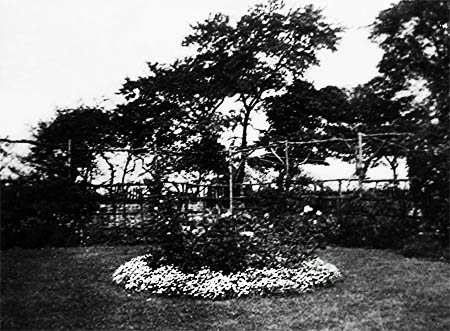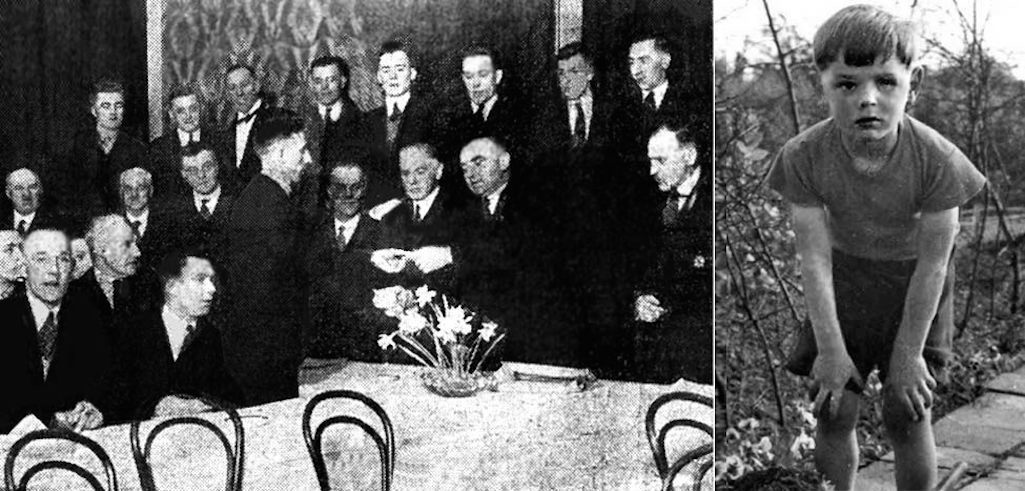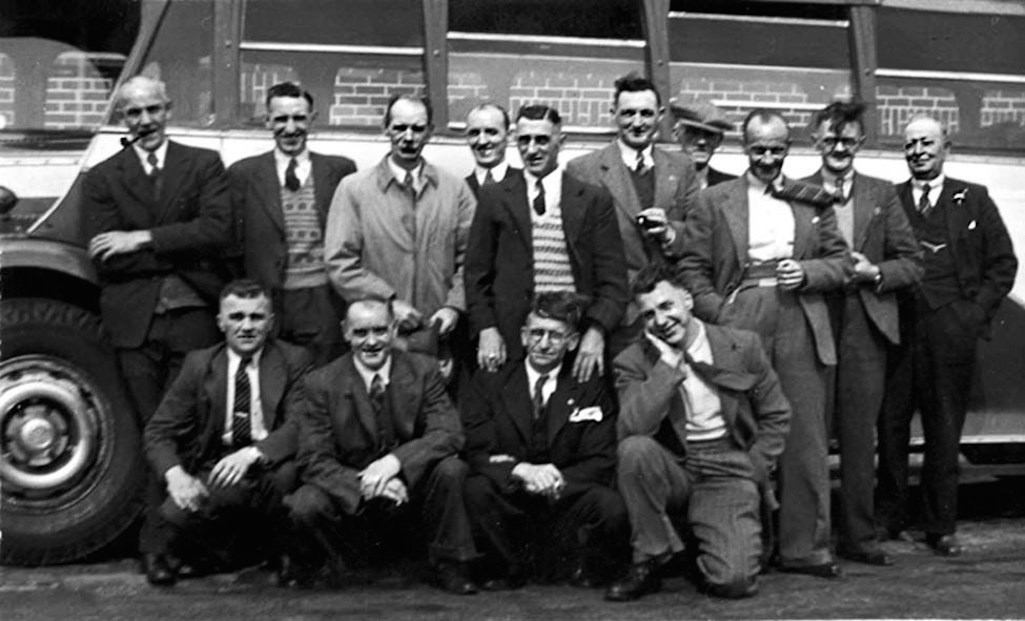An Illustrated History of Old Sutton in St Helens, Lancashire
Part 68 (of 95 parts) - Memories of Sutton Part 18
Compiled by Stephen Wainwright ©MMXX
'Living at Sutton Hall Cottage' by Eileen Spencer
My grandfather William Vose Spencer worked for Michael Hughes at his Sherdley Estate Office from 1912 to 1956. Our family lived at Sutton Hall Cottage, which was at the end of a very old barn near the entrance to the Score footpath. One room was the estate office and we lived there until my father sold it in 1982. A Mr. Holden bought it for his business installing stair lifts and he converted the old barn into offices. I have not been back since 1982 but I have made my mind up to go and investigate!
The demolition of Sutton Hall in 1935 had a little to do with the fact that my grandfather had been asked to stay on to administer the remaining Sherdley estate after the agent Gorie Heggie had left. He was given the option of living in the Hall but my grandmother refused to consider it, saying "I'm not living in that cold, draughty place"!
As the house was in a state of disrepair, it was decided to pull it down. All that was left of the Hall when I was growing up was the remains of the old cellar and a small brick porch that our family used as a garden store. It was from that cellar that a rumoured secret passage led to Sherdley Old Hall and Michael’s Mount. No trace of it was ever found and my Dad and his brother did quite a bit of searching! I used to play on the cellar steps and the site of the hall became a rose garden.



Michael Hughes-Young inherited the estate after the death of his uncle and after the war gave an old stone font that had been at Sherdley Hall to my grandfather. The font was transferred to our cottage by horse and cart and placed in the grounds. I remember it well and have several photographs of myself with my arms round it. It had an inscription which read ‘a gift by John Joly for the use of this Chapel 1722’. John Joly was, as far as our family knew, a traveller who used to stay overnight at a chapel of rest, possibly St. Helens. However in the St.Helens Reporter’s obituary of Michael Hughes, it said the font had originated in Lea Green and was connected with the unfrocking of a minister.

When we sold the property we brought the font with us to Leicestershire but in 1991 it was stolen from our garden. We made several attempts to locate it, including via an on-line organisation called Trace, which specialises in tracing unusual antiques. However we have given up hope of ever seeing it again.
'Granddad as a Sutton Lad' by David Case
All my family are justifiably fed up with hearing about my life, but this is just a bit about me in the few years that started in Thatto Heath and ends when I left school in 1947. I was born just before Christmas 1930. Our home was 63 Dorothy Street in Thatto Heath. In those days that was the last house – furthest away from Elephant Lane. Our end of the street was un-paved, and became a track across the "downies" to the clay-hole. No-one in our road owned a car. Outside our house was a gas-lamp, and at dusk, the lamp-lighter would come along the street to light it. My elder brother and I went to Thatto Heath Infant and Junior School - about 50 yards from our back yard. Schooling started as soon as you were 3 years old, so it was January 1934 when I went there.My father was a coal miner, and in those days all miners came home covered in coal dust – no pit-head washing facilities then! When he went to work at night the lamp he used on his bike was acetylene-powered, as batteries in those days were expensive. The acetylene was produced by dripping water onto calcium carbide – the faster the water, the bigger the flame! Our house was lit by gas, and we had no hot water, so Mother heated the water in the “copper” and father would bathe himself in front of the fire.

Part of this path went by a blacksmiths, and occasionally we might see pit ponies being re-shod. When the weather was bad, we used to take the tram into the town centre and then out to Sutton. The terminus was at the corner of Robins Lane and Peckershill Road. Trolley buses replaced trams to Sutton in 1935 and I can remember watching workmen dismantling the tram-lines in Robins Lane. The dilapidated remnants of the trolley bus shelter at the Moss Bank terminus is still in existence.
I used to love listening to "Children's Hour" on the wireless. Stuart Hibberd and Al Varley Del both spoke beautiful English and I wanted to sound like them! I completely lost my local accent! Our house was too small for a family of 5 - just 2 bedrooms , so soon after the war started we moved to Sutton. Father had become a "deputy" at the pit. At last we had 3 bedrooms, electric lighting, and hot water on tap! We still had the old "wireless", so we took the battery to "The Red Rose" in Peckershill Road to be re-charged. (I know Tom Williams and my father were friends).
My brothers and I went to Robins Lane junior school, and then to Cowley. I enjoyed my time at Cowley with two exceptions - Latin and History - and I was put in a class which took Art and Woodwork instead. The only foreign language I took was French, and I must admit that I didn't work hard at my French. In those days miners' sons didn't go abroad for holidays! I was not to know how important my woodworking skills would become for me – both utilitarian and artistically. I was 16 when I saw an advertisement for the Air Ministry branch of the Civil Service. I applied and was accepted. I left school, and trained to be a Meteorological Assistant in London. I was 16 years old. My time in Sutton was over. I only returned to live in Sutton after several years, so my time as a Sutton lad was over.
’The Day I Visited Lea Green Colliery' by Phil Morris
The year was (I think) 1954 when, totally by surprise, Cliff Morris decided to take his 5 year-old-son Phil (me) on a visit to Lea Green Colliery. My father was a deputy in King pit at Lea Green. ‘Deputy’ was the name given to the person responsible for the safe extraction of coal within his district underground. The trip to the colliery will remain embedded in my memory forever. We walked around the back of what was then Roughdales Brickworks and reaching the footpath that ran parallel to the Liverpool Manchester railway, finally arrived at the pit.
Left: Newly-qualified Lea Green pit deputies receiving certificates from colliery manager Joe Robinson at the Fleece Hotel in St.Helens in 1937. Cliff Morris is on the left looking at the camera; Right: Phil Morris aged five in the back garden of Chester Lane c.1954

Left: Newly-qualified Lea Green pit deputies receiving certificates from colliery manager Joe Robinson at the Fleece Hotel in 1937; Right: Phil Morris aged five in the back garden of Chester Lane c.1954

Left: Newly-qualified deputies receive certificates; Right: Phil Morris c.1954
The next area visited was (according to former miner Tom Griffin) known as 'forbidden territory'. Yes all you former miners, it WAS the winding house. Dad took me up these metal steps and on reaching the top knocked on the door, saying something like "Bert, can we come in". The answer came from within "Whose that". Dad’s reply was "It's me Cliff with me lad", whereupon the door opened. We were ushered in by a portly gentleman, who then returned to his operator’s seat.
Very shortly afterwards the signals rang and the steam winder slowly came to life. (I think it was built by Greenhalghs but I can't be certain. Can anybody throw any light on whether this was so?). I can remember the speed at which the crank operated and the governor spun round. It was phenomenal and I watched the depth gauge on the wall in front of the engine go round, indicating how deep the cage was at any particular time. We were indeed privileged to even be in there, let alone watch the engine in operation. After leaving the Winding House we went to the baths.
I'd never seen a shower before and the place was full of steam with scantily clad figures darting about draped in towels. Dad pointed to a cubicle and said "that's my shower". Perhaps the officials had their own. We looked at the fitters' shop and saw what Dad said was a motor of a conveyer in all sorts of bits and pieces being repaired. There was lots to interest a young lad. In fact we spent quite a while in there and it was really interesting to see what was used underground.

Pit deputies from Lea Green Colliery having just arrived in Blackpool - contributed by Phil Morris

Pit deputies from Lea Green Colliery having just arrived in Blackpool

Pit deputies from Lea Green Colliery having just arrived in Blackpool
I think it was the interest that I must have shown in the fitting shop when I visited the colliery that led to another visit to a machinery exhibition. This took place a few months later and was staged at the NCB Depot/HQ in Eltonhead Road. There was lots to see there as well. I particularly remember what I think was an arc shearer being demonstrated. It was mounted on caterpillar tracks and ran off compressed air and made one hell of a noise. The operator raised and lowered the cutting jib to show its capability to the NCB’s potential customers. On reflection I'm almost certain it was made by Mavor and Coulson.
I have many memories of an age when British industry was still in its prime with factory and colliery buzzers heralding the start or finish of a particular shift. I can remember the women who worked in the brickworks going back and forth, to and from work, with clog irons ringing on the pavement. Another noise which constantly echoed in the Chester Lane area, was the constant ‘squeak squeak’ of the endless haulage system that was used by Roughdale’s Brickworks to take clay that had been cut from the quarries to the works. It was a circuit of boxes or tubs mounted on small gauge tracks. It was hauled by a wire hauser from a steam driven engine which was on the go day in and day out.
The reader of these recollections may not be aware that Lea Green Colliery, together with Sutton Heath colliery and the brickworks, were all under one banner, namely Sutton Heath and Lea Green Collieries Ltd. This also included Sutton Heath and Roughdales brickworks, so a lot of actual mining methods e.g., the ‘endless haulage system’, referred to above was adapted by the brickworks and used by them long after the nationalisation of the collieries in 1947.
My dad retired in 1961 aged 63 or 64 just before Lea Green’s closure, after previously being asked to go to Parkside as an instructor. But after so many years at the colliery, he decided to call it a day and enjoy his second-most passion in life, the garden!



